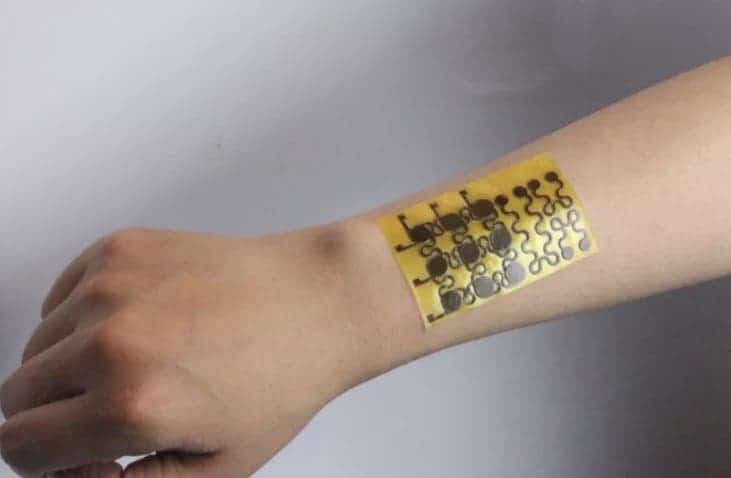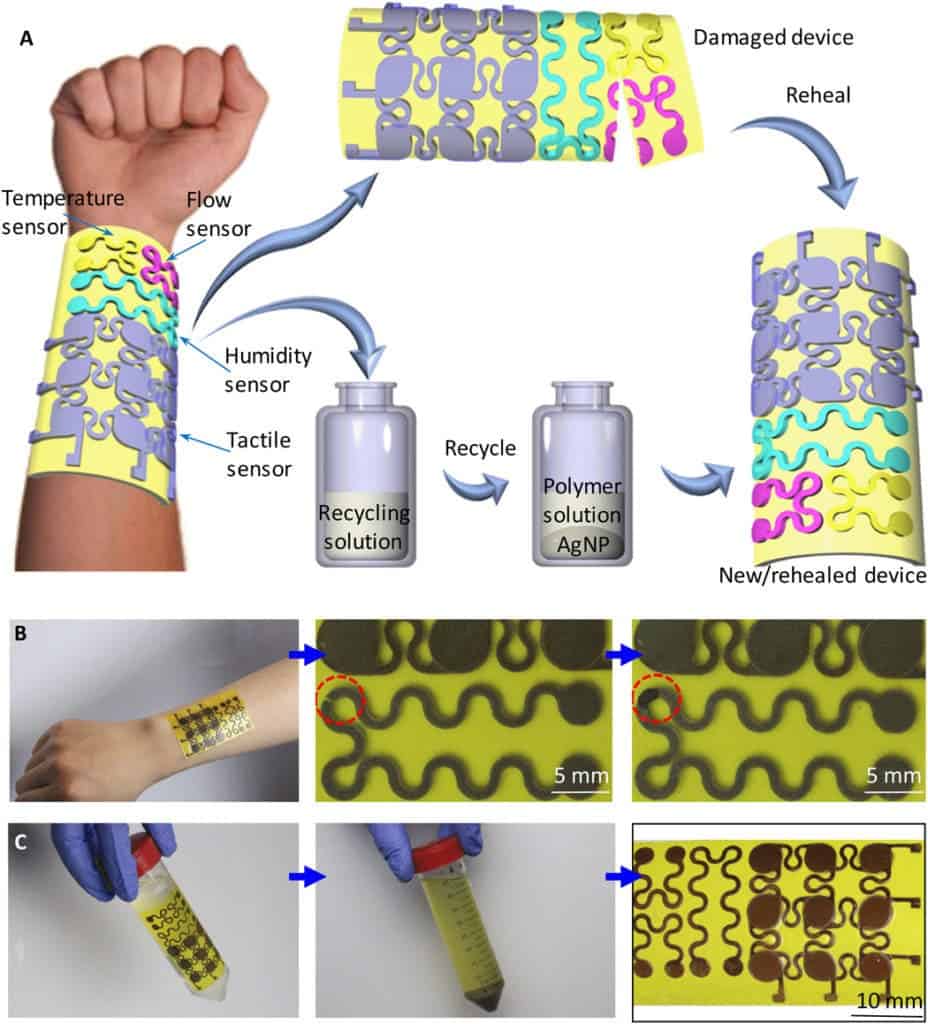Scientists at the University of Colorado Boulder devised an electronic skin, or e-skin, which mimics the mechanical and functional properties of natural human skin. The artificial skin is stretchable and bendable, but also capable of measuring pressure, temperature, and vibration. In the future, this upgrade will enable robots to sense their environment, making human-robot interactions less creepy. E-skin will also be helpful for disabled humans who are forced to wear a prosthesis.
Robo-touch
Electronic skin isn’t a novel concept. For the last decade, scientists all over the world have demonstrated functional artificial skin that possesses the ability to feel and touch objects. However, this is the first time that we’re shown an e-skin that can both heal itself and is fully recyclable.
“This particular device … won’t produce any waste,” said study co-author Jianliang Xiao, an assistant professor of mechanical engineering at the University of Colorado Boulder. “We want to make electronics to be environmentally friendly.”
Xiao and colleagues made their e-skin out of polymer and silver nanoparticles, the latter being responsible for the device’s self-healing properties. If for some reason the e-skin is torn in half, the two sides can come back together in the presence of a rehealing agent and heat pressing, which restores the broken chemical bonds. If the damage is irreparable, the device can be put into a solution that separates and recovers the silver nanoparticles, thereby allowing the material to be recycled for a new e-skin.
“What is unique here is that the chemical bonding of polyimine we use allows the e-skin to be both self-healing and fully recyclable at room temperature,” Xiao said.
Xiao envisions the e-skin being fundamental to improving interactions between human beings and robots. For instance, the scientist imagines babysitting robots equipped with fingers covered in e-skin that can tell what the temperature of the baby is or can measure pressure so the robot doesn’t press too hard.
Similarly, prostheses wrapped in e-skin can enable people who have lost a limb to regain control not only of their dexterity — at least in part — but also sensing ability, as reported in the journal Science Advances.
But this e-skin isn’t perfect. Unlike our own natural skin, the e-skin isn’t very flexible or stretchable. Worse of all, the device isn’t easily reproducible, which is why Xiao and colleagues are working on a solution that might enable them to scale down the e-skin’s manufacturing.
“We are facing pollution issues every day,” Xiao noted. “It’s important to preserve our environment and make sure that nature can be very safe for ourselves and for our kids.”











